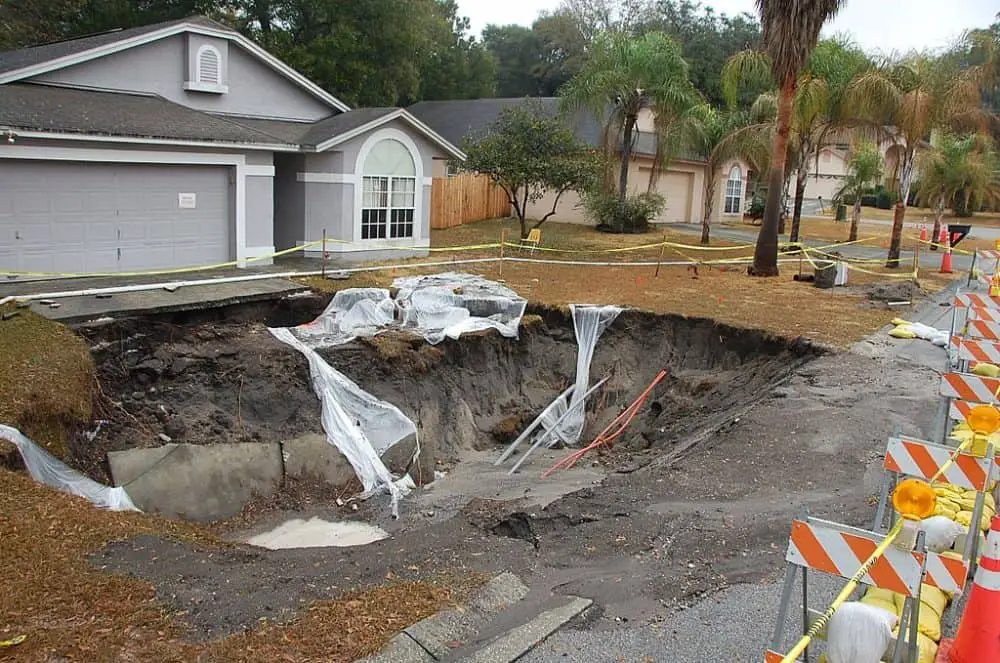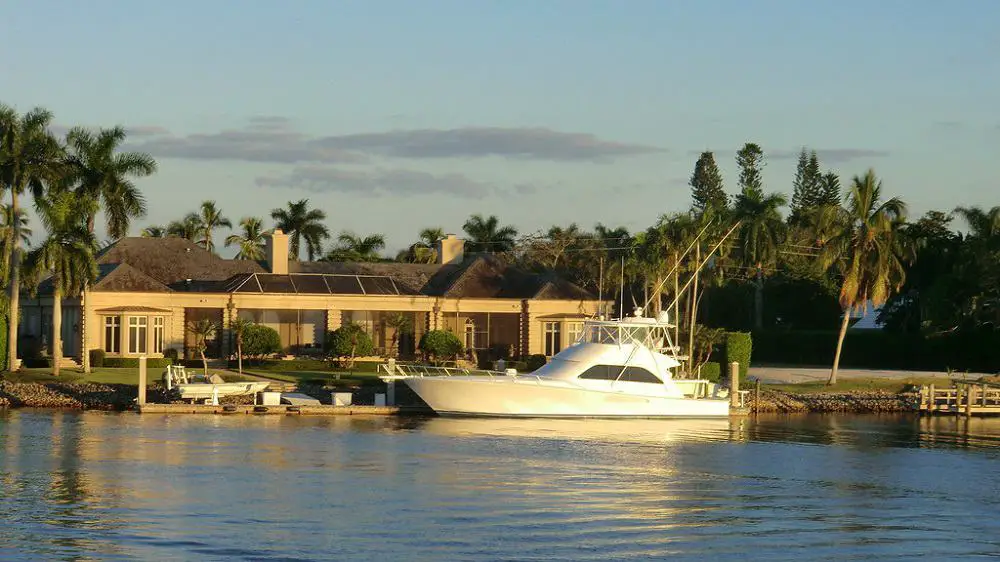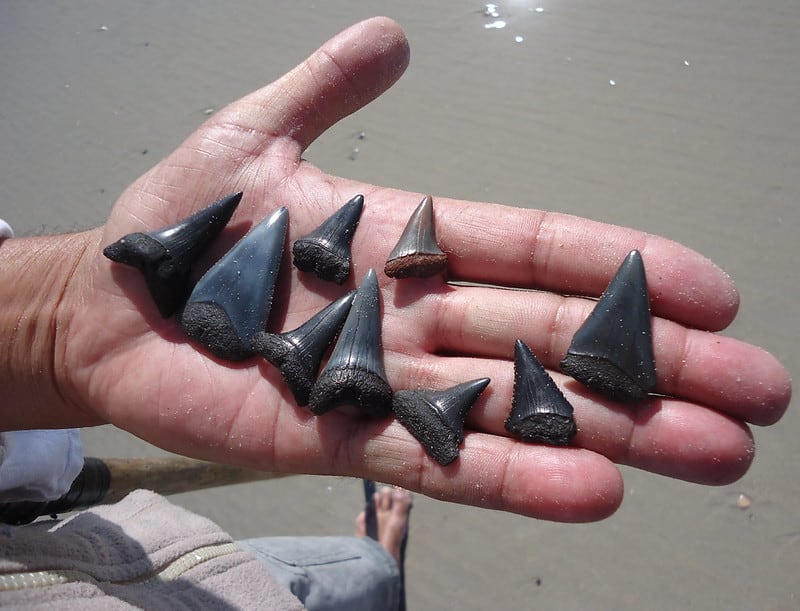Florida sinkholes typically occur in areas with carbonate bedrock. Sinkholes are natural caves or crevices that open up when there’s a sudden increase in rainfall.
They’re also called sinkholes because they’re located in the ground where water once came from. Sinkholes may seem like an everyday occurrence, but they’re often overlooked or underestimated.
You probably don’t know about them until you’re en route to work and discover them while driving home.
However, sinkholes shouldn’t be ignored; they can have a negative impact on our environment if we ignore them or try to make them go away by measures that are ineffective or unpredictable.
Limestone is common throughout Florida’s underground terrain, and its dissolved bedrock can cause caves and underground tunnels to form.
Groundwater that flows in these areas can also shift and erode the soil, resulting in sinkholes that rise above ground level.
1. Geology of Sinkholes in Florida
Florida’s sinkholes are caused by a combination of natural and man-made forces. The state’s growing population creates a large risk of sinkholes.
Since the 1920s, Florida has ranked among the top seven states in population growth.
This growth also causes a higher need for drinking water. Since 90 percent of the state’s water comes from aquifers, sinkholes can form when water levels get too low.
Why does Florida have so many sinkholes?
Sinkholes can occur anywhere in Florida, but they are more common in areas of limestone. Because limestone is so common throughout Florida’s underground terrain, water can dissolve the bedrock and create a sinkhole or cave. This can cause erosion and sinkholes.
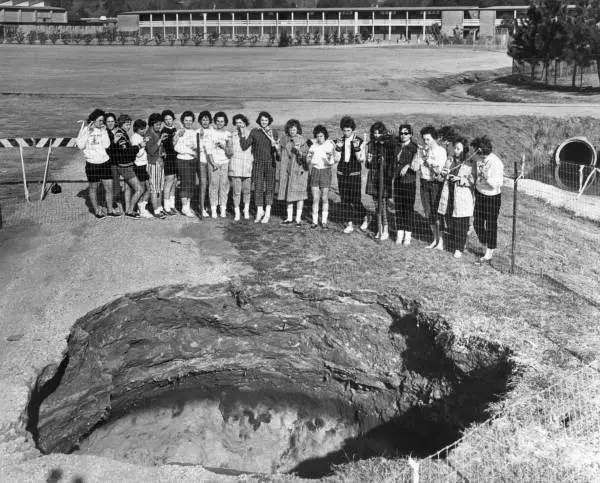
The erosion process leaves voids in the rock that collapse when the rock can’t hold the weight of the earth.
The water can also erode soil, shifting it and causing sinkholes above the surface.
Sinkhole formation has accelerated in recent years.
The Florida sinkhole problem has been exacerbated by man-made development. The risk of sinkholes in developed areas is 11 times greater than in rural areas.
This is because heavy equipment and construction projects that maneuver over the earth can erode protective layers of soil, which makes sinkholes more likely.
Additionally, buried infrastructure like underground pipes can disrupt the karst.
Several different factors can contribute to sinkhole formation, including heavy rainfall and extended droughts.
Other causes of Florida sinkholes include:
- Water pumping
- Land development
- Construction of retention ponds
Sinkholes in Florida can be small to very large and can swallow entire homes and swimming pools.
Because of these natural processes, sinkholes are not only dangerous for property owners, but they are also an environmental issue.
While Florida’s bedrock is mostly soluble, it can be susceptible to dissolution due to acidic groundwater.
Florida sinkholes can be identified by the use of geophysical technology. This technology is used to study a variety of geological conditions. It can be useful for estimating how a sinkhole may develop over time.
The data gathered by this method can be used to create maps of sinkholes in Florida. The results of the study can be used to improve existing models.
The findings of the study can be useful for researchers, land owners, and property owners.
2. Groundwater Causes Sinkholes
Florida sinkholes are also caused by water that is diluted by rainfall and seeps into the soil.
The state has carbonate bedrock, primarily limestone, which dissolves and becomes acidic when it seeps through the soil.
Florida’s terrain is honeycombed, meaning it has many cavities that allow water to collect and slowly erode the bedrock. This eroded bedrock eventually collapses, creating a sinkhole.
Sinkholes in Florida are a cause of major concern for the state, as they threaten the health of the aquifer and cause human life.
The development of surface-water resources in Florida is affecting groundwater resources. The groundwater level declines due to groundwater development are expected to accelerate sinkhole formation and increase the aquifer’s susceptibility to contamination.
Hence, the interactions between surface-water resources and groundwater resources are vital for the management of water resources.
Furthermore, groundwater and surface water interactions are important factors that affect the ecosystems of Florida’s wetlands.
3. Climate Change
Climate change is responsible for the increased frequency and severity of extreme weather events that can lead to disasters and sinkholes in the state of Florida.
Some of these extreme events can feed into one another, such as hurricanes and landslides.
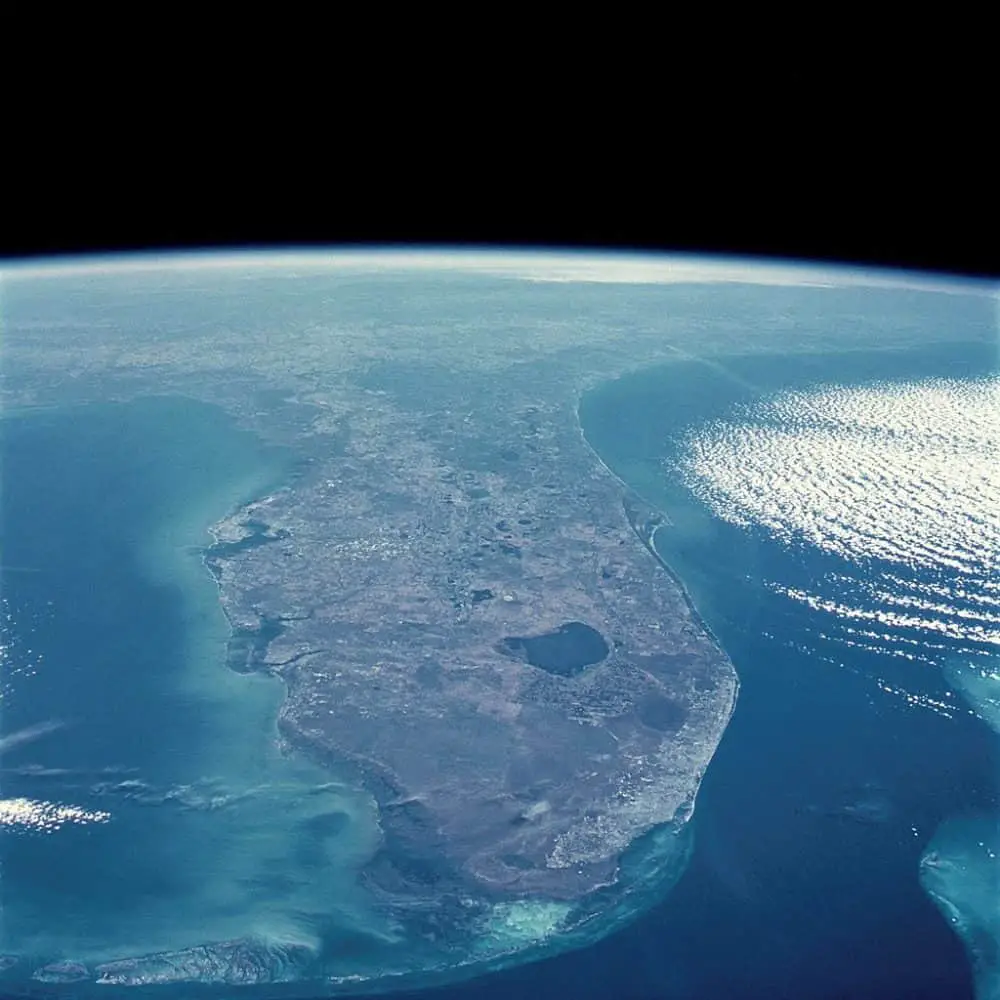
Scientists also know that the effects of climate change are being felt in the increased occurrence of sinkholes and other geohazards.
In the past, three large sinkholes opened in Florida’s The Villages neighborhood, draining water from recreation centers and causing a public safety issue.
Florida administrators have taken note of the issue and are developing plans to mitigate the effects of climate change in the state. These efforts include addressing the effects of climate change on flooding and sinkholes.
A recent study suggests that sinkholes may be linked to climate change, but there is still no direct evidence of a correlation. But as the Earth warms, extreme weather is also predicted to become more common in Florida and the south-eastern US.
More research on the relationship between sinkhole activity and climate change is needed.
4. Impacts on Florida Sinkholes
Sinkholes have a devastating impact on Florida’s communities and are a cause for concern.
The state is underlain by carbonate rocks, and sinkholes can occur anywhere. However, some regions are more susceptible to sinkholes than others.
These areas tend to have more limestone close to the surface, and sinkhole activity is more common there.
The resulting cavities can be large enough to collapse the roof of a house. Although water is the main trigger for sinkholes, it can also be caused by human activity, including broken drain pipes and sewer lines, improperly compacted soil, and buried trash.
While sinkholes are mostly a nuisance for property owners, they can be deadly.

Sinkholes have become a major source of concern for residents of Florida. They pose a threat to water supplies and can be deadly.
Therefore, it is essential to map areas of high risk for sinkholes to mitigate their consequences. Strategic changes to land use practices are necessary to protect communities.
5. Impacts on Property Values
The impact of sinkholes on property values in Florida is well documented.
While sinkholes in Florida may not have much impact on commercial growth, they can cause a dramatic decline in the market value of unrepaired homes.
The government imposed new sinkhole rules in the state to stem the influx of claims.
If you’re considering buying a home, it’s essential to find out how sinkholes affect property values in the area.
In some cases, sinkholes can severely impact the value of a home and cause a significant decrease in property values.
In Central Florida, four of the 10 counties with the highest sinkhole reports were in the same county.
Sinkholes are not uncommon in Florida but are rare in southern Florida.
Water conservation is essential to preventing sinkholes and protecting the water supply.
Taking measures to prevent over-pumping and water shortages is important year-round and during the drought. Public cooperation is key to protecting water resources in the state.
A common rule is to limit outdoor watering during dry periods and limit outdoor watering.
Florida Has the Most Sinkholes
While Florida is notorious for alligators, hurricanes, and other natural disasters, it might surprise you to learn that the Sunshine State also has more sinkholes than any other state in the union.
Tallahassee
Sinkholes in Tallahassee are about 60 feet wide and 65 feet deep. In a recent sinkhole, part of a mobile home was swallowed.
Two other mobile homes were also condemned. Luckily, the sinkhole was repaired, but the property owners plan to have a geotechnical engineer examine the area to determine how many other sinkholes may form.
The largest sinkhole in Tallahassee, Florida is the Porter Hole Sink. It is located about 650 feet north of Faulk Landing.
This sinkhole has been drained six times but is currently inundated due to recent rain events.
While sinkholes can occur anywhere in Florida, the most common and dangerous areas are located in West Central Florida.
These areas are characterized by karst limestone and high amounts of rainfall. This combination increases the risk of sinkholes.
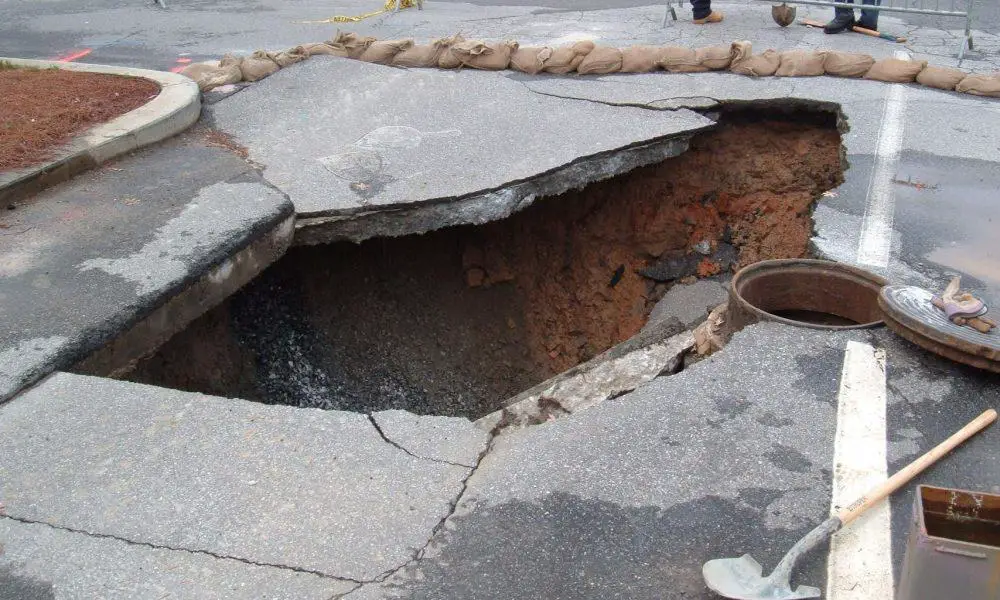
The city is home to many notable educational and cultural institutions. According to the website Best College Reviews, Tallahassee is the 18th best college town in the nation.
It is also home to the Florida State Capitol and the Florida Supreme Court.
Other notable institutions in Tallahassee include the Florida Chamber of Commerce and Florida Bar.
Central Florida
While most sinkholes are in Florida’s central region, the state is also vulnerable to sinkholes in other parts of the state.
In Florida, sinkholes are most likely to form during the spring rainy season, when frequent storms add rainwater to the land. The wetter the ground, the heavier the rainwater, causing it to sink deeper into the ground.
This increased mass and erosion combine to cause a sinkhole to form. One of the largest sinkholes to form in Florida occurred in Winter Park in 1981, when a sinkhole opened, swallowing a house and six Porsches.
The hole was 90 feet deep and caused significant damage.
The state’s sinkholes tend to be more frequent in the west than in the center, which has lower levels of erosion and higher elevation.
This makes the aquifer more isolated from natural processes.
This region has fewer sinkholes than other parts of Florida, which have more cities.
Sumter County
The state’s Hazard Mitigation Plan, prepared by the Florida Division of Emergency Management, rated Sumter County, Florida as a “medium” sinkhole risk in 2013.
The plan was based on public reports of sinkholes but was not based on geological studies.
Sinkholes can be very dangerous because they can completely destroy a house. They’re created when the earth’s surface layer collapses. In extreme cases, they can swallow entire neighborhoods and even houses.
Sinkhole depressions can also cause plumbing, foundation, and slab leaks.
Florida’s climate and the topography create perfect conditions for sinkholes to form.
Florida has karst topography, which is a type of land formation where water seeps through porous limestone, exposing pockets of air.
The karst area also contains aquifers.
As previously mentioned, water is the primary trigger for Florida sinkholes. During dry weather, moist soil stabilizes the karst, but during drought, the groundwater lacks sufficient moisture to support the voids.
When the groundwater suddenly pours, the weight of the water in these voids causes them to collapse and cause sinkholes.
The Ocala area in particular has been especially prone to sinkholes for years. Previously, the area was not very developed, so sinkholes were not a big problem.
However, as development increases, more sinkholes are occurring, making it one of the worst sinkhole areas in the state.
Florida sinkholes are also common in the area surrounding Lake Butler, which is home to several sinkholes.
Some experts believe that this is because of the weight of water.
How Deep Are Florida Sinkholes?
The sinkhole in Winter Park measured about 90 feet deep and caused $4 million in damages.
A map of sinkhole activity in the state shows two main zones: zone 1 and zone 2.
Zone 1 is comprised of carbonate rocks near the surface, and zone 2 is made up of limestone. These zones often contain sinkholes that are shallow.
Florida is particularly susceptible to sinkholes and is the state’s, Sinkhole Alley. The state’s Pasco and Hernando counties are home to the most sinkholes.
Sinkholes are often found in stream beds, and a sinkhole in a stream can take out a stream entirely.
Wrapping Up
Florida sinkholes are a common occurrence, but they’re often overlooked or underestimated.
These natural caves or crevices can have a negative impact on our environment if we ignore them or try to make them go away by measures that are ineffective or unpredictable.
However, with the right knowledge and understanding, we can work together to prevent these sinkholes from causing too much damage.
So if you’re ever in Florida and see a giant hole in the ground, don’t worry – it’s just a sinkhole. Just take a picture and post it on social media with the hashtag #sinkholesofflorida.
But please, do not try to fill them in or make them go away – that’s our job!
Just be sure to steer clear of them, because they can definitely cause some damage if you fall into one!
As Floridians, we should all be aware of these natural wonders and what they mean for our environment.
So the next time you see one (and you will), remember that sinkholes are just part of life here in the Sunshine State.

